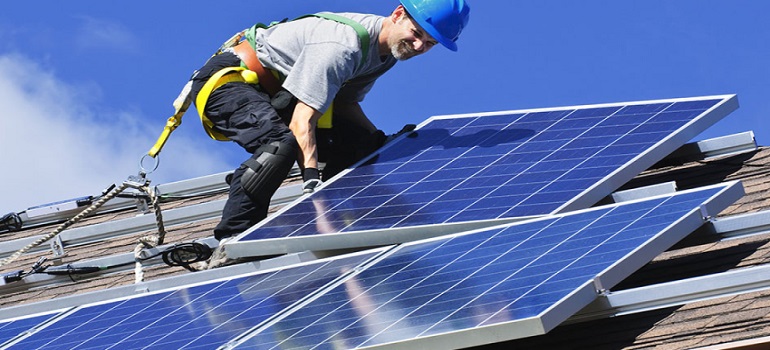 The growth in the solar rooftop segment has not been significant, and the government may find it difficult to achieve the target of installing 40 gigawatt (GW) of capacity by 2022, say experts.
The growth in the solar rooftop segment has not been significant, and the government may find it difficult to achieve the target of installing 40 gigawatt (GW) of capacity by 2022, say experts.
The government has set a target to install 100 GW of solar capacity by 2022, out of which 40 GW has to come from rooftop projects.
However, the country has managed to set up just over 2 GW of solar rooftop capacity so far, while the target for just financial year 2017-18 was 5 GW, according to the data from the ministry of new and renewable energy.
“Rooftop projects can’t be added in that quantity as a lot of structures built were not designed for setting up such projects. People are not used to open space deficiency, so it will be tough to do it in the quantity envisaged by the government,” Solar Power Developers’ Association president Vineet Mittal told .
Anmol Jaggi, founder and director, Gensol group, said, government establishments and commercial buildings like malls or even warehouses have the capacity to install such projects, but it’s difficult on residential buildings, especially considering the structures that are being developed today.
But the concern remains about grid connectivity and metering, according to him, as most warehouses don’t use the total power they generate, which in that case becomes imperative to pump into the grid.
“To achieve the target of 100 GW, government will have to find some alternate sources as 40 GW through rooftop alone seems difficult,” Jaggi said.
Experts believe gross metering PPA’s with solar rooftop farms on warehouses should be adopted for supplying or supplementing discom requirements in the urban and industrial load clusters.
Floating solar projects could be also be a good alternative for the government to meet its 100 GW target due to limitations of land use, according to Sunil Rathi, director, Waaree Energies.
“It is expected to develop into a leading segment within the industry given the low deployment costs, reduction in water evaporation and the potential to yield higher energy harvest,” he said.
Source: PTI


